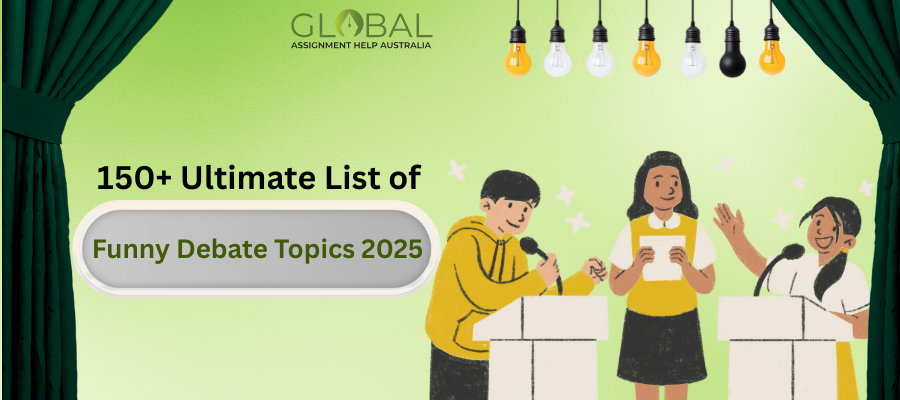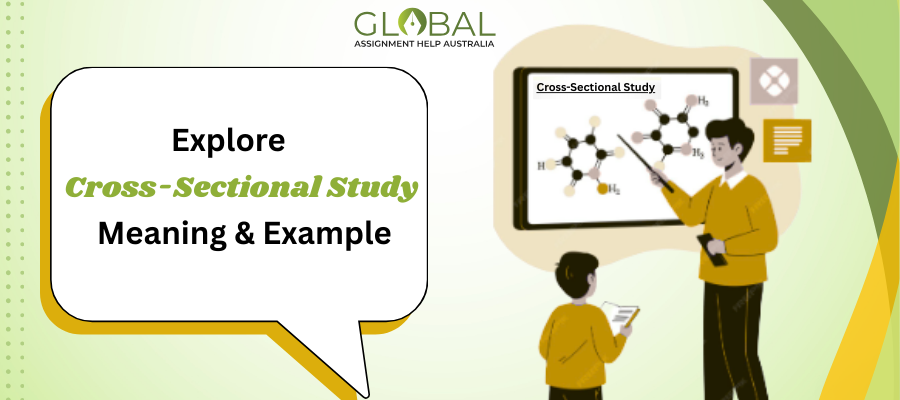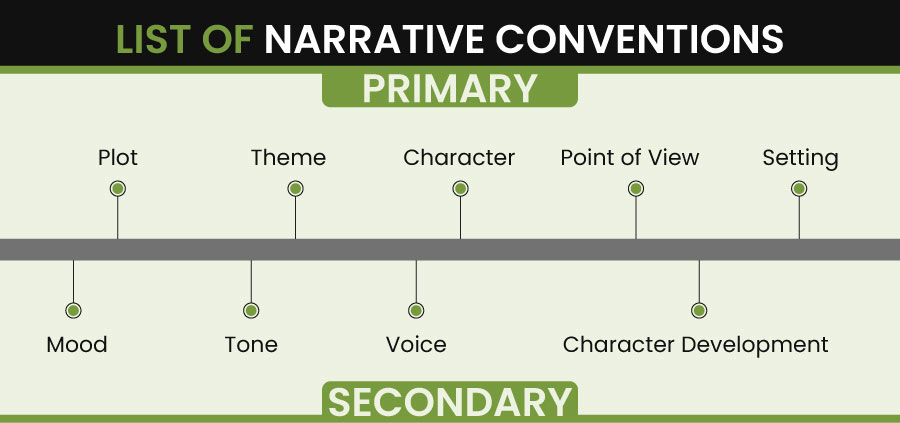 Offers
New
Order Now
Offers
New
Order Now
Are you looking for someone to guide you in understanding Narrative Conventions?
Do you also get troubled while analysing some story or novel for writing an assignment?
These questions are in the mind of students when they have to analyse a story or novel for assignment writing on some topic. It could be their reference or to understand the meaning of that specific subject, or they have to write their observation at some point as their assignment. At this point, they might wonder what type of elements or style a writer chooses while writing a novel or story. Narrative Conventions is the style most used by writers in a story or novel.
For writing a well-descriptive assignment, you must have an understanding of this type of writing style. In this blog, you will study everything about the convention that would help you to write better content. First, let's understand what are Narrative Conventions.
Try Our Assistance!A narrator creates a story to convey their ideas by combining different elements. As a result, the reader receives the message clearly and directly. Also, literature like novels, poems, plays, and narratives use this convention. The content you read has undergone extensive planning and strategy phases to reach its final state. One example of this planning and plotting is the narrative conventions. To use or understand the content of this style, you must be aware of its list.
There are different types of narrative convention list, which are split into two sections that include primary and secondary. A list of narrative conventions is explained in the below section briefly:
The theme is the idea of the story around which everything revolves. It is considered one of the essential terms of a story. It can be written in words or short phrases. There are different types of themes, which include love, war, horror, etc. All these can be described to the audience through motifs, style, tone, and writing style.
In simple terms, the plot refers to the logical flow of the story. Every written event has beautiful movements and connectivity. It helps readers to understand the story in better way. That is why it is considered one of the essential narrative conventions. There are a few stages of a plot which include:
The time and location of the story are the backbone of any story and are referred as the setting. The environment in which the story is played can set the mood for viewers. The better the setting, the more it attracts audiences.
You must have understood the name and what it means. Characters are the subjects, or people, around whom the story revolves. A story can have various characters depicting their personal stories.
If we say it in easy terms, a conflict is a struggle or fight between two or more characters in the story. It sometimes creates suspense, which attracts the audience towards the story. It is why almost every story shows conflicts. There are some examples of it which are listed below:
When writing anything, whether it is a blog, an article, an essay, or anything else, perspective matters. So, three types of points of view include: first-person, second-person, and third-person.
These are primary narrative conventions, we hope you have understand it well. Now move to secondary narrative conventions.
There are four types of secondary narrative conventions which is equally important as primary. All these are listed below:
It can be considered the way a writer communicates in the story. The tone matters because it can provide the reader's perspective. For example, when a writer is writing in the first person, their tone can change from person to person. When they are writing in the third person, the tone can be neutral or unbiased.
In a story, mood can be set by the way the writers portray the story. There words creates a psychological enviroment that helps to set mood of the audience. For example, it can be scary, romantic, serious, etc.
There are various voices, which are used depending on the different characters. It is used for depicting several stories about characters which helps readers remember the character's voices.
It refers to the changes that occur within the character during the story. The way it developed and changed with time increased the audience’s curiosity.
These are a few kinds of narrative conventions that change writers' words into beautiful concepts. We hope you all understand this; if not, you can see the narrative convention examples listed below.
You can also read about Generic Conventions from here
These Narrative Conventions examples will give you a better understanding of the concept. If not, then there are language conventions list available online. You can refer to them for better knowledge.
1. Setting
The Harry Potter shooting was done in the United Kingdom and Ireland.
2. Characters
People around which the story revolves are characters. There are number of famous characters and some of them you can see below:
Lets see some examples, Sherlock Holmes, Jay Gatsby, etc.
3. Conflicts
In the book Old Man and the Sea, the protagonist had a conflict with nature.
4. Point of View
In the line "I have come to this coffee shop," the writer is talking from their perspective.
5. Theme
Some of the best examples of the theme are Romeo and Juliet, which described love, and the movie The Fault in Our Stars, which shows a story of illness.
6. Mood
She was crying due to hunger. "Crying" here is the mood of the girl.
7. Plot
In the Harry Potter movie, the story starts in childhood and ends when he becomes an adult. So, this phase changes with time and provides a logical flow to the story.
We hope these few narrative convention examples will make you understand the concept better and clearer.
Buy Our Academic Writing Services and Get Quick Help from Our Experts to Fetch HD Grades.
Students pursuing any degree may find themselves in a situation where they need to analyse a story or read content where they need to know about the narrative conventions for better understanding. So, they have to get good at both, knowing how to use it while writing a story or writing a content observation. These points make it necessary for students to learn about narrative conventions and its elements. But, even if you face some trouble and need help to do it, we are here for you.
Read more about Clinical Reasoning Cycle - Phases, Benefits, & Examples
We have various experts with diverse professional experience and backgrounds. Be it in writing an assignment or simply a content observation, they have the knowledge to do the task. They use narrative conventions and its elements in your tasks to make it look more captivating to the reader. Also, when it is for the Literature students, where they have to analyse a book or story, our assignment help and homework help experts can even help you to do that task. We make sure to give you the unique content you expect and help you score well on your assignments.
We hope this content has helped you understand everything about narrative conventions.
1. Why Narrative Conventions Are Important?
Narrative conventions are one of the prime parts of a story because they make it readable. It also helps writers connect with their readers more by using this.
2. What Is the Purpose of Conventions in Writing?
Conventions help readers understand the writing much better. If there are any grammar, spelling, or punctuation mistakes, the reader will not find them interesting. So conventions help remove them and make writing flawless.
3. What Are the 6 Narrative Conventions?
Point of view, settings, theme, plot, style, and conflicts are six narrative conventions that work as the backbone of the story.
4. What Are Conflicts in Narrative Conventions?
Conflict is a literary element that gives the story suspense and makes it more dramatic. So that readers hook up with the story and find it interesting.
5. What Are the Most Important Writing Conventions?
The prime conventions are spelling, punctuation, grammar, and capitalisation.
You may also read more blogs from here :-
Top 5 Mind-Bending Benefits of Homework Will Put You in Work
Top 41 Computer Science Dissertation Ideas Students Should Know

Grab this exclusive offer and start your journey to savings today! Act quickly, as this special offer won't be around for long!

This blog explains what is a hyperbole, provides engaging examples, & explores how to use hyperbole.

Explore 150+ funny debate topics to spark laughter, creativity, and lively discussions in 2025

Cross-Sectional Study basics explained with steps, examples, and comparisons.
Limited Time Offer
Exclusive Library Membership + FREE Wallet Balance
1 Month Access !
5000 Student Samples
+10,000 Answers by Experts
Get $300 Now
Update your Number

